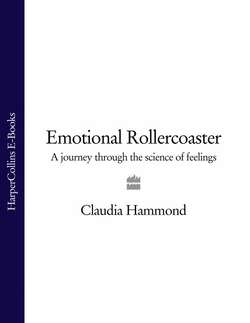Читать книгу Emotional Rollercoaster: A Journey Through the Science of Feelings - Claudia Hammond - Страница 27
how we learn to feel disgusted
ОглавлениеDisgust is one of the earliest emotions that we experience. From birth, babies show disgust at bitter tastes and as Charles Darwin noted the expression of disgust gradually becomes more frequent. He became fascinated with the development of emotions after the birth of his first child and decided to document his son’s emotional expressions. More than thirty years later he wrote a book on the subject, a book which is often overlooked today. Darwin clearly observed disgust on his son’s face at the age of five months – on one occasion in response to cold water, on another at a piece of ripe cherry. ‘This was shown by the lips and whole mouth assuming a shape which allowed the contents to run or fall quickly out; the tongue being likewise protruded. These movements were accompanied by a little shudder. It was all the more comical, as I doubt whether the child felt real disgust – the eyes and forehead expressing much surprise and consideration.’
Whether or not babies do feel the emotion in the same way as adults, by the age of three toddlers have learnt what adults consider to be disgusting. Although babies and toddlers will happily play with their faeces they soon discover that they shouldn’t, suggesting that they only learn disgust through social conditioning. This is reinforced by a study which examined fifty children who had grown up in the wild; none showed any signs of disgust at bodily products. However, toddlers tend to learn disgust at faeces particularly easily, leading some such as Val Curtis, who researches hygiene and disgust at the London School of Hygiene and Tropical Medicine, to suggest that we are born with a propensity to find certain objects disgusting; it’s far easier to convince children to be revolted by faeces than by sweets. Having said that, it is impossible to disentangle the influence of socialisation. Inevitably it would be difficult to train a child to believe that sweets are disgusting because other children would soon undermine this view, whereas disgust at faeces is reinforced by every adult or older child they meet.
As children develop, their responses to disgust become more sophisticated. Imagine you go into a room where you’re given a glass of clean, fresh water. You drink some water and then you’re asked to spit into the glass before taking another sip. Would you do it? It is your own saliva after all and only moments before it was in your mouth. Then you’re given a fresh glass of water and a dead, but sterilised, cockroach is held in tweezers and dipped into the water. There’s nothing physically wrong with the drink in either case but when university researchers gave people these tasks most wouldn’t do it. At the age of four children will happily drink up, but by seven, like adults, they don’t want to. Before this age they might not possess the complex thought processes which would allow them to see contamination in the same (admittedly at times irrational) way as adults. An understanding of contamination requires the ability to follow a long chain of events. In order to feel repulsed by the idea of licking an object which has fallen on the floor, you need to consider that somebody who had previously stepped in dog faeces would have a dirty shoe which then touched the floor, thus contaminating the food, and finally you. By the age of seven or eight children’s thinking skills have developed to an extent where they can not only follow this chain, but can use disgust to their advantage with ploys such as licking the last biscuit and then offering it to their squirming sibling with the words, ‘Go on – eat it then!’
